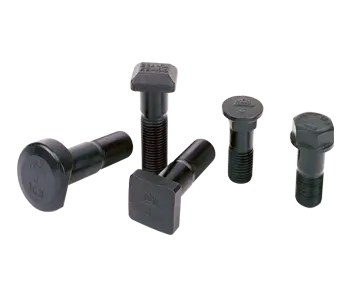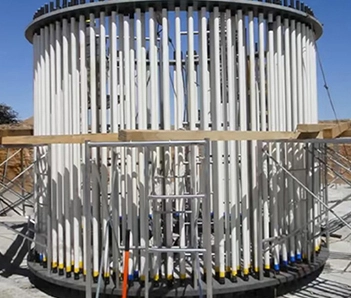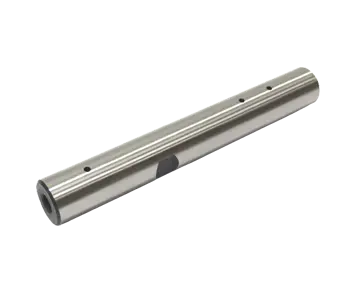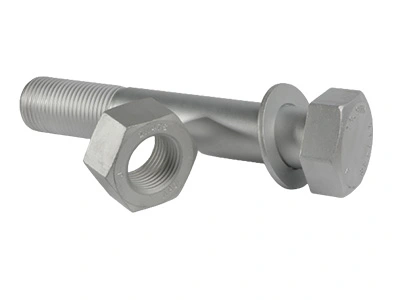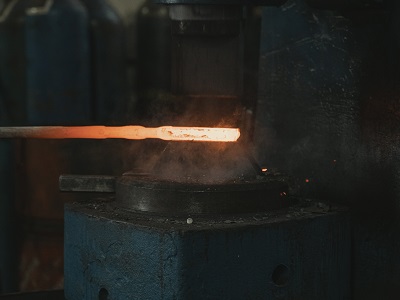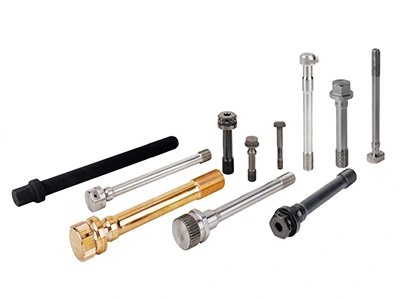
The purpose of bolted connection of parts is to make the two parts connected closely fit. At the same time, in order to bear a certain dynamic load and ensure the reliable connection and normal operation of the connected parts, it is also necessary to have sufficient clamping force between the two connecting parts. Therefore, it is required that the bolts used for connection should have sufficient axial preload after tightening. Based on this, we will analyze the causes of looseness.
The yield point tightening method is generally adopted for bolt connection, that is, the pre-tightening force of the bolt should reach the yield strength of the bolt material. Considering the safety factor, it should not exceed 80% of the yield limit of the material. The yield strength of the bolt of different materials is different, which also means that the maximum pre-tightening force that the bolt of different materials can bear is different. Therefore, in the process of product design, designers need to accurately analyze the required tightening torque of connecting parts, fully consider the weight, volume, working condition, working environment, safety standards and other factors of connecting parts, and select appropriate strength bolts and thread patterns.
Under the conditions of load change, vibration, impact, etc., the parts connected by bolts will gradually reduce or even disappear the compression force and preload of the connection. After repeated times, the threaded connection will become loose, and finally the bolt will become loose due to failure. The form of bolt and nut joint is particularly serious. Therefore, effective anti-loosening measures must be taken in the process of product design to avoid the loosening and falling of bolts or nuts caused by bad working conditions.
The pre-tightening force that the bolt can achieve in the process of tightening directly determines the clamping force between two connecting parts. Insufficient pre-tightening force will inevitably lead to the loosening of connecting bolts and eventually the loosening of connecting parts. The following two methods are generally used to obtain the bolt preload during assembly. The first way is to use hand tools (such as solid wrench, ring wrench, Allen wrench, ratchet wrench, etc.). The pre-tightening force obtained by the bolt depends on the size of the operator's arm force and the length of the tool's arm. The general hand tools are standard tools, and the arm length is certain, while the operator's arm force is limited, unstable and uncontrollable, so is the pre-tightening force obtained by the bolt. The second way is to use pneumatic tools or electric tools (such as pneumatic impact wrench, electric impact wrench, etc.). The pre-tightening force obtained by the bolt depends on the maximum output tightening torque of the tool itself and the stability of the tool operation. If the power supply is insufficient and the air supply pressure is insufficient, the tightening torque of the tool output will be insufficient, and the final bolt cannot meet the required preload.
During the assembly process, there are single bolt and multiple bolt tightening states. For the tightening state of multiple bolts in groups, especially those with regular distribution, the bolt tightening methods and methods are extremely important, which directly affect the actual pre-tightening force of each bolt. For example, when four bolts are tightened at will, the pre-tightening force of the bolts tightened at the front will decrease with the tightening of the bolts at the back, and even the bolts tightened at the first time will become loose. Therefore, when assembling group bolts, they must be tightened in a certain sequence in a distributed, symmetrical and gradual manner. Otherwise, the installation bolts will be loosened due to inconsistent tightness, and even the connecting parts will be deformed due to uneven stress.
The size of threaded hole or mounting bolt hole is particularly important when connecting two connectors. The size of threaded hole directly affects the pre-tightening force obtained by the bolt. If the threaded hole is too large or too small, the pre-tightening force obtained by the bolt cannot meet the requirements. If the size of the mounting bolt hole is too large, the surface of the connected part will produce plastic annular indentation at the contact with the bolt or nut bearing surface. Severe indentation will reduce the pre-tightening force of the bolt or lose the pre-tightening force, resulting in the loosening of the nut or bolt.
